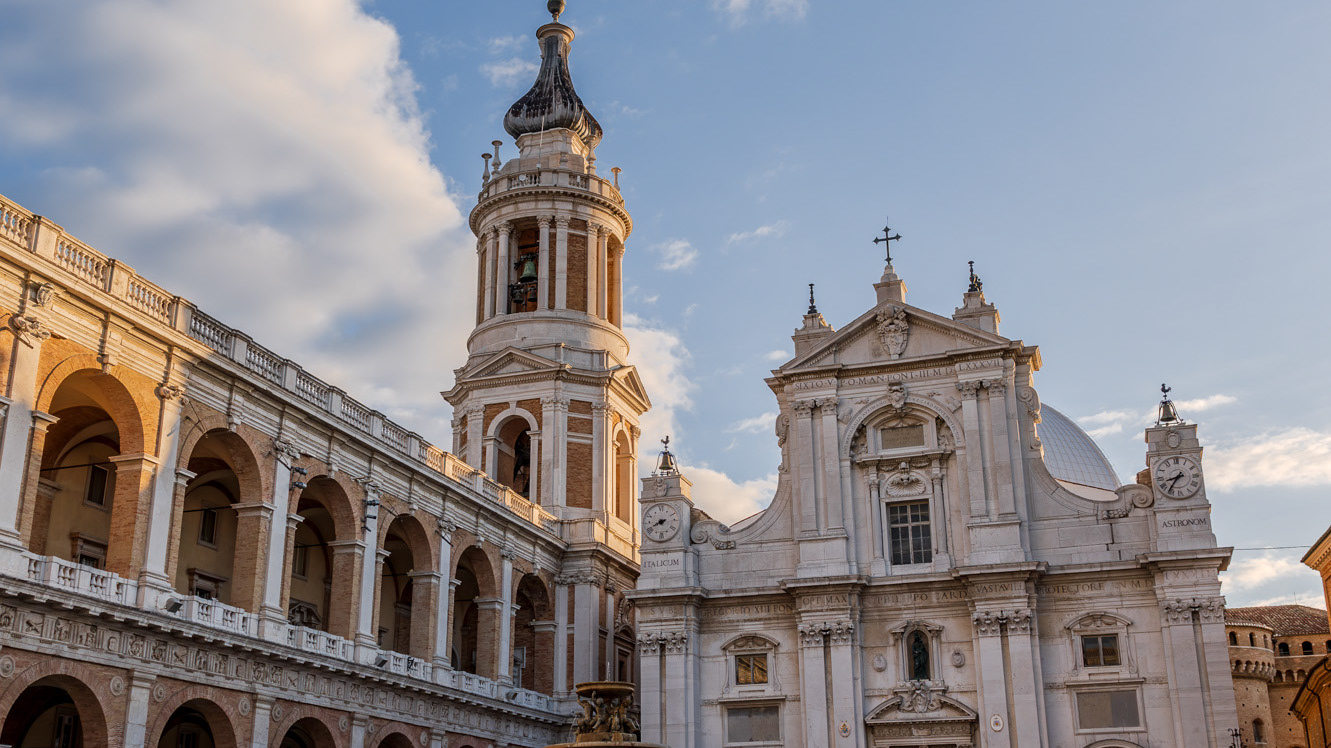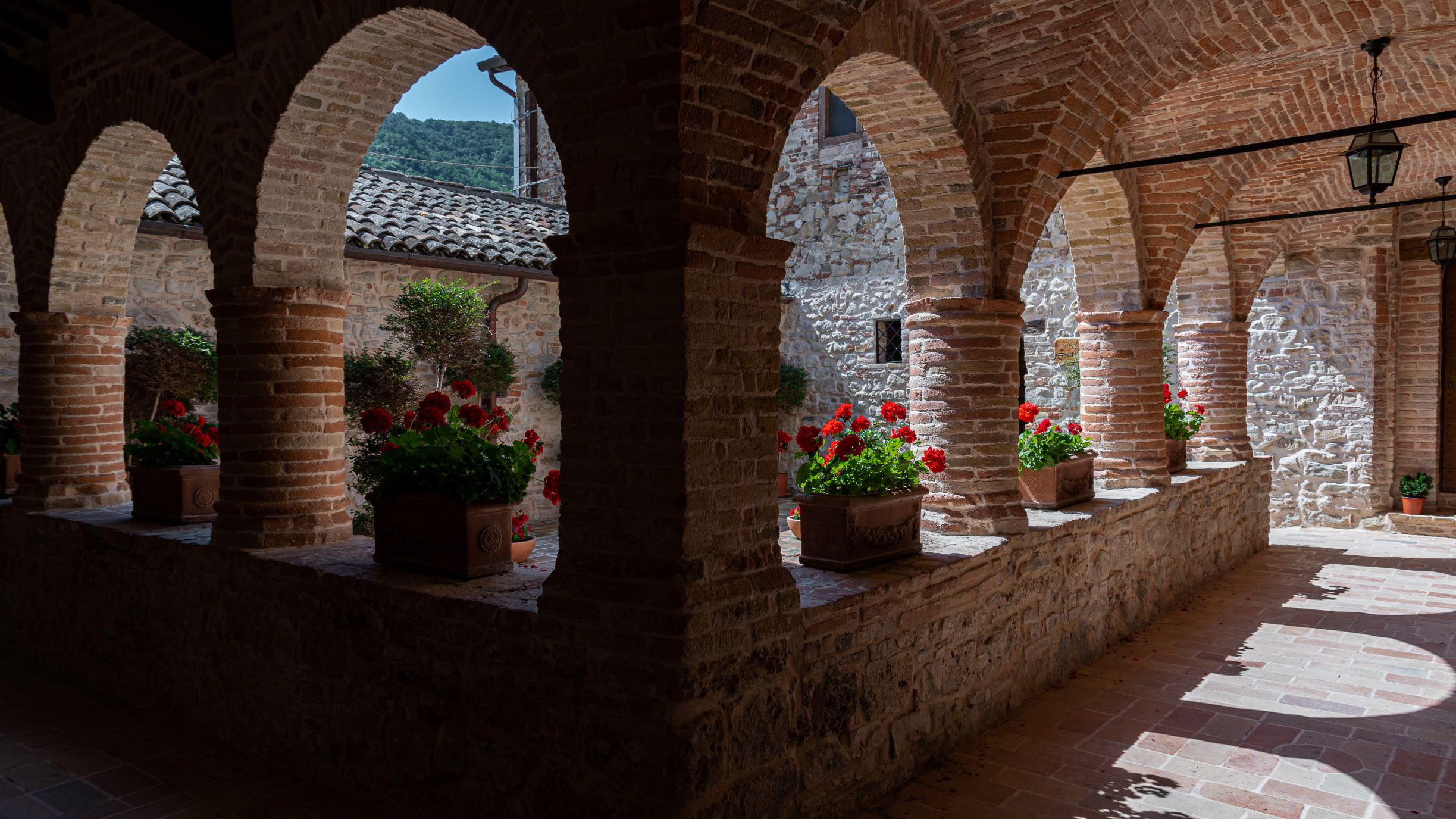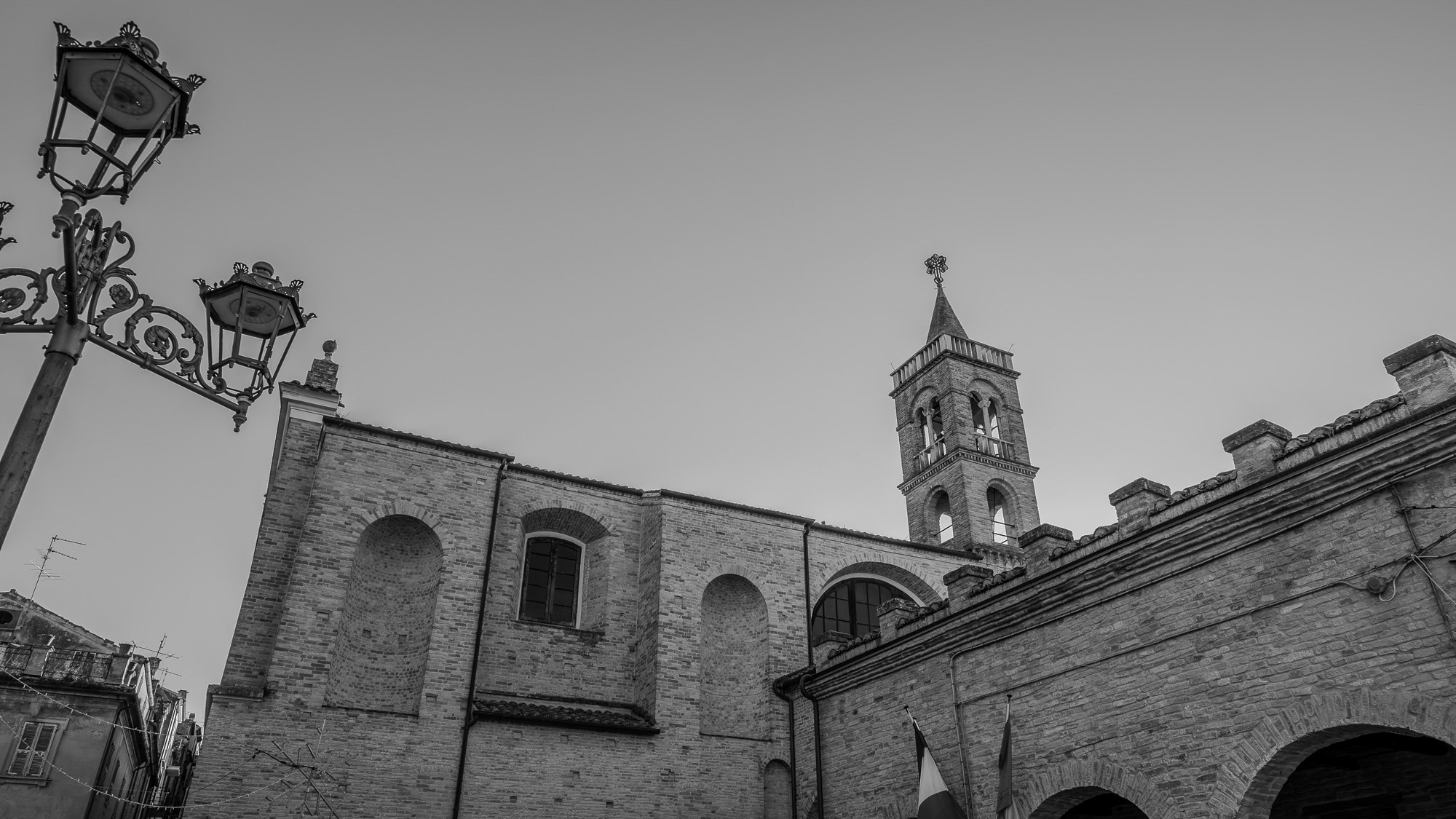Ascoli Piceno. The church of S. Tommaso Apostolo
2022
The church of S. Tommaso Apostolo, built in Romanesque style, stands on the side of the homonymous square which houses the remains of the Roman amphitheater of Ascoli Piceno, reinterred in 1974.
You may also like
2022
Recanati. Piazza Leopardi with the town hall
Recanati is an Italian town of 20 975 inhabitants in the province of Macerata in the Marche region.

2025
Montedinove. Glimpses
Montedinove is an Italian municipality with 442 inhabitants in the province of Ascoli Piceno in the Marche region. The town sits on a hill 561 meters above sea level between the Aso and Tesino valleys, on the slopes of Mount Ascensione. It is part of the Sibillini mountain community. The town, inhabited since the Picene era, welcomed the people of Ascoli seeking refuge from the Lombards in 578. Later, the territory was donated in 1039 by Longinus to the Abbey of Farfa, and it was the people of Farfa who built the fortifications to defend the town. In 1239, the town was besieged by King Enzo but managed to emerge victorious after two years. In 1279, the town became a free municipality, while in 1586, under Pope Sixtus V, it became part of the Presidiato di Montalto. In the following centuries Montedinove followed the fate of the Papal States and Italy.

2024
Loreto. The Basilica of the Holy House
The Basilica of the Holy House is one of the main places of veneration of Mary and one of the most important and visited Marian shrines of the Catholic Church. It is located in Loreto.
2022
Ripatransone, Ascoli Piceno. The Church of S. Rocco
The Church of S. Rocco was built in the first half of the 16th century, with a sandstone portal by M. Giacomo da Varese. Inside, the wooden statue of St. Rocco, by the Ripano sculptor Don Francesco Evangelisti (18th century), and the altar statue of the Sacred Heart of Jesus (around 1875), by Giorgio Paci from Ascoli.
2022
Recanati. The cathedral of San Flaviano
The church of San Flaviano is the cathedral of Recanati. On 12 June 1805 it was elevated to the dignity of a minor basilica by Pope Pius VI.

2020
Rotella. Hermitage of San Francesco
In the territory of Poggio Canoso, along the road from Rotella to the Ascension mountain, there is an ancient convent, one of the first Franciscan hermitages built in the region. Tradition has it that it was San Francesco himself, perhaps bringing back everything that was already existing Benedictine, to choose the place that would host his convent and remain there for a night. The convent of Poggio Canoso was suppressed on 18 December 1653. After the uncertainties about its use, the convent finally received the attention it deserved and from 1989 to 2009 it was the seat of the "Meeting Community" of Don Pierino Gelmini. The boys, guests of the center, with precise and assiduous work, managed to restore the church, the cloister and all the ancient Franciscan structures to the splendors of the times of the conventual fathers.

2024
Acquaviva Picena. Mother Church of San Nicolò
The church is dedicated to S. Nicolò di Bari, patron saint of the city. The original construction dates back to the 16th c., and then assumed its current architectural forms during the 19th century

2023
Ascoli Piceno. The Church of San Francesco
The church of San Francesco in Ascoli Piceno is considered one of the best Italian works of Franciscan architecture, as well as the most representative Franciscan religious building in the Marche region.
2022
Ripatransone. The co-cathedral of SS. Gregorio Magno
The co-cathedral of Saints Gregorio Magno and Margherita is the main cult building in Ripatransone, in the province of Ascoli Piceno, co-cathedral of the diocese of San Benedetto del Tronto-Ripatransone-Montalto. It is a minor basilica and a triple sanctuary, as it also includes the chapel of the Madonna di San Giovanni and the crypt of Mercy and Death, considered temples in their own right.

2025
Grottammare. The Medieval Castle
Sources report news of the settlement on the hill starting from the 11th century, but the origin of the castle could be dated back to the 8th and 9th centuries.
